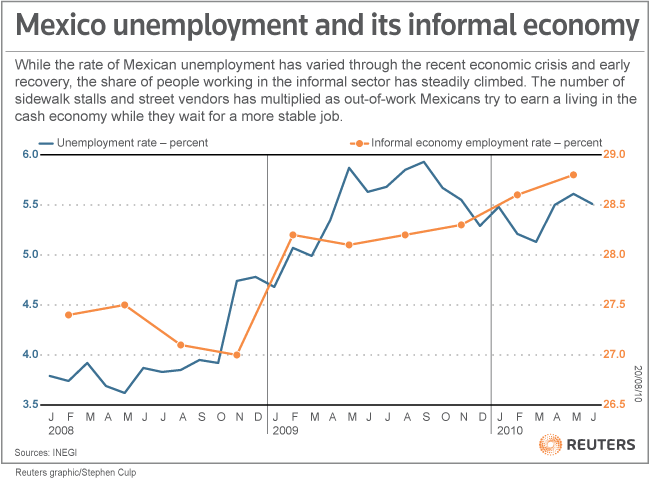Mexico Economic Forecast
Please note that we are not authorised to provide any investment advice. The content on this page is for information purposes only.
Mexico’s economic fortunes are closely tied with that of the US. Periods of economic growth for the US economy are almost certain indicators for economic growth in Mexico as well. Conversely, recessions and economic downturns in the US are also likely to have adverse effects for the Mexican economy.
Mexico’s economic fortunes are closely tied with that of the US. Periods of economic growth for the US economy are almost certain indicators for economic growth in Mexico as well. Conversely, recessions and economic downturns in the US are also likely to have adverse effects for the Mexican economy.
One such case of this was during the 2008 global financial crisis. The Mexican economy suffered negative GDP growth (constant prices, national currency) in 2009 at -6.113 percent, as a direct result of exports to the US falling drastically. Mexico’s GDP (PPP) also fell from US$1.553 trillion in 2008 to US$1.471 trillion in 2009.
The future of the Mexican economy on the other hand appears to be stable with the US economy recovering at a slow but steady pace. In 2010, Mexico’s GDP growth (constant prices, national currency) was 5.518 percent – accompanying a 2.834 percent rise for the US economy.
However, experts warn that unless Mexico taps on its network of free trade agreements and expand its exports base by trading with other emerging economies, the economy will forever remain at the mercy of the US. Mexico must also tackle micro-environmental problems such as the high level of illegal activities in the country and a persistently high emmigration rate.
Table of Contents
Mexico’s GDP Forecast
Mexico is the 14th largest economy in the world according to GDP (Current prices, US dollars) and the 11th largest according to GDP (PPP). In 2010, Mexico’s GDP (Current Prices, US dollars) was US$1.039 trillion with a GDP (PPP) of US$1.567 trillion. By 2011, Mexico’s economy GDP(PPP) will grow by 5.79 percent to US$1.658 trillion. After which, Mexico’s GDP (PPP) is expected to grow annually by 4.68-5.47 percent from 2012 to 2016. By the end of 2016, Mexico’s GDP(PPP) will reach US$ 2.115 trillion.
Similarly, Mexico’s GDP (PPP) per capita is expected to see similar patterns of slow but consistent growth. In 2010, Mexico’s GDP (PPP) per capita was US$14,429.85. From 2011 to 2016, Mexico’s GDP (PPP) per capita will grow annually by 3.64-4.74 percent to US$18.338.93. However, this growth is unlikely to match with other emerging economies as Mexico’s ranking in GDP (PPP) per capita will drop from the 59th largest in the world to the 62nd.
Mexico’s Unemployment Forecast
Mexico had the lowest unemployment rate in Latin America for 2010 at 5.373 percent – ahead of Paraguay’s 6.1 percent. Despite this, unemployment for 2010 was the second highest in the country for over a decade, with only 2009’s rate of 5.459 percent surpassing the 2010 figure.
According to the OECD Employment Outlook, Mexico’s unemployment rates are unlikely to return to pre-financial crisis levels in the short term. “Projected output growth will not be robust enough to quickly absorb the large labour market slack accumulated during the downturn”. However, Mexico’s economic forecast suggest that improvements in the unemployment rate is expected to pick up steam by 2013 where unemployment would have fallen to 3.5 percent. This number is expected to remain consistent through to 2016.
Yet many experts suggest that unemployment figures in Mexico may have skewed by the informal economy. According to a Reuters report, Mexico’s informal labour force – comprised mainly of poorer workers – now makes up nearly 28.8 percent of the total labour force. Even with a decline in unemployment rate, it appears as though informal labour is gradually increasing. In the aftermath of the 2008 financial crisis, an increasing amount of Mexicans have moved over from the formal to the informal labour force.
Credit: Reuters
Mexico’s Inflation Rate & Current Account Forecast
Since the 1995 currency crisis, Mexico has been successful in stabilizing inflation rates in the country through microeconomic policies. In 2010, Mexico’s inflation rate (average consumer price change) was 4.151 percent, falling from 5.3 percent in 2009.
By 2011, Mexico’s inflation rate (average consumer price change) is expected to fall even further to 3.63 percent. Inflation rate will drop to 3.124 percent in 2012 before eventually fluctuating around the 3 percent mark from 2013 to 2016.This trend reflects some of the factors of Mexico’s economy, such as the appreciation of the Mexican Peso, MXN, a lack of labour cost pressures, government controlled tariffs and effects of government tax increase in 2010.
Mexico posted a current account balance deficit of -US$5.69 billion in 2010. Along with Brazil, Mexico was one of the few Latin America countries to have operated with a current account balance deficit for that year. In 2011, Mexico’s current account balance deficit will increase by 84.06 percent to -US$10.473 billion. By the end of 2016, Mexico’s current account balance deficit is expected to reach -US$22.245 billion.





